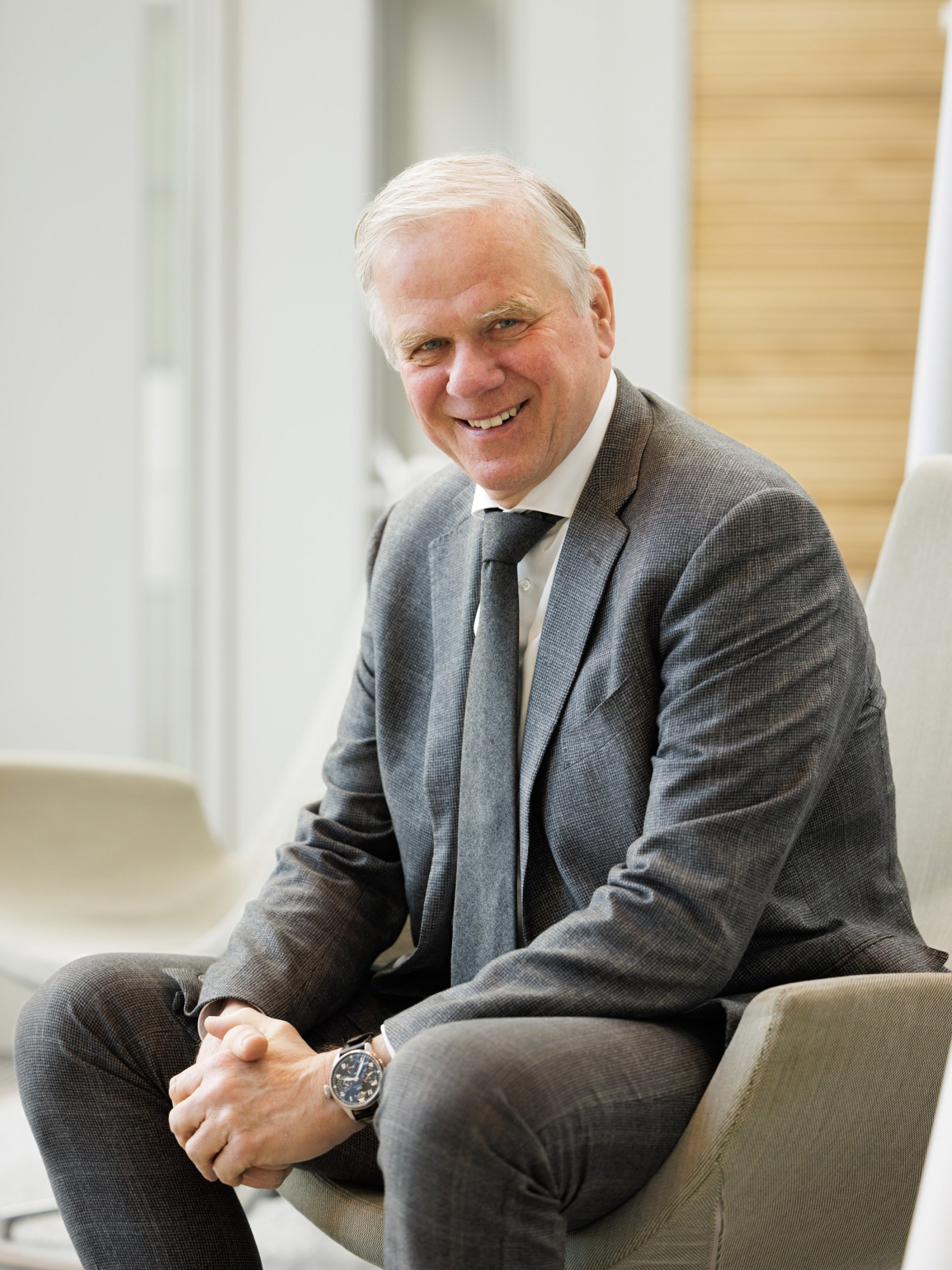
ASML
Photolithographers have a limited set of tools at their disposal to make smaller designs, and for decades, the type of light used in the machine was the most critical. In the 1960s, machines used beams of visible light. The smallest features this light could draw on the chip were fairly large—a bit like using a marker to draw a portrait.
Then manufacturers began using smaller and smaller wavelengths of light, and by the early 1980s, they could make chips with ultraviolet light. Nikon and Canon were the industry leaders. ASML, founded in 1984 as a subsidiary of Philips in Eindhoven, the Netherlands, was just a small player.
The way van den Brink tells it, he arrived at the company almost by accident. Philips was one of a few technology companies in Holland. When he began his career there in 1984 and was looking into the various opportunities at the company, he became intrigued by a photo of a lithography machine.
“I looked at the picture and I said, ‘It has mechanics, it has optics, it has software—this looks like a complex machine. I will be interested in that,” van den Brink told MIT Technology Review. “They said, well, you can do it, but the company will not be part of Philips. We are creating a joint venture with AES International, and after the joint venture, you will not be part of Philips. I said yes because I couldn’t care less. And that’s how it began.”
When van den Brink joined in the 1980s, little about ASML made the company stand out from other major lithography players at the time. “We didn’t sell a substantial amount of systems until the ’90s. And we almost went bankrupt several times in that period,” van den Brink says. “So for us there was only one mission: to survive and show a customer that we could make a difference.”
By 1995, it had a strong enough foothold in the industry against competitors Nikon and Canon to go public. But all lithography makers were fighting the same battle to create smaller components on chips.
If you could have eavesdropped on a meeting at ASML in the late 1990s about this predicament, you might have heard chatter about an idea called extreme-ultraviolet (EUV) lithography—along with concerns that it might never work). By that point, with pressure to condense chips beyond current capabilities, it seemed as if everyone was chasing EUV. The idea was to pattern chips with an even smaller wavelength of light (ultimately just 13.5 nanometers). To do so, ASML would have to figure out how to create, capture, and focus this light—processes that had stumped researchers for decades—and build a supply chain of specialized materials, including the smoothest mirrors ever produced. And to make sure the price point wouldn’t drive away its customers.
Canon and Nikon were also pursuing EUV, but the US government denied them a license to participate in the consortium of companies and US national labs researching it. Both subsequently dropped out. Meanwhile ASML acquired the fourth major company pursuing EUV, SVG, in 2001. By 2006 it had shipped only two EUV prototype machines to research facilities, and it took until 2010 to ship one to a customer. Five years later, ASML warned in its annual report that EUV sales remained low, that customers weren’t eager to adopt the technology given its slow speed on the production line, and that if the pattern continued, it could have “material” effects on the business given the significant investment.




